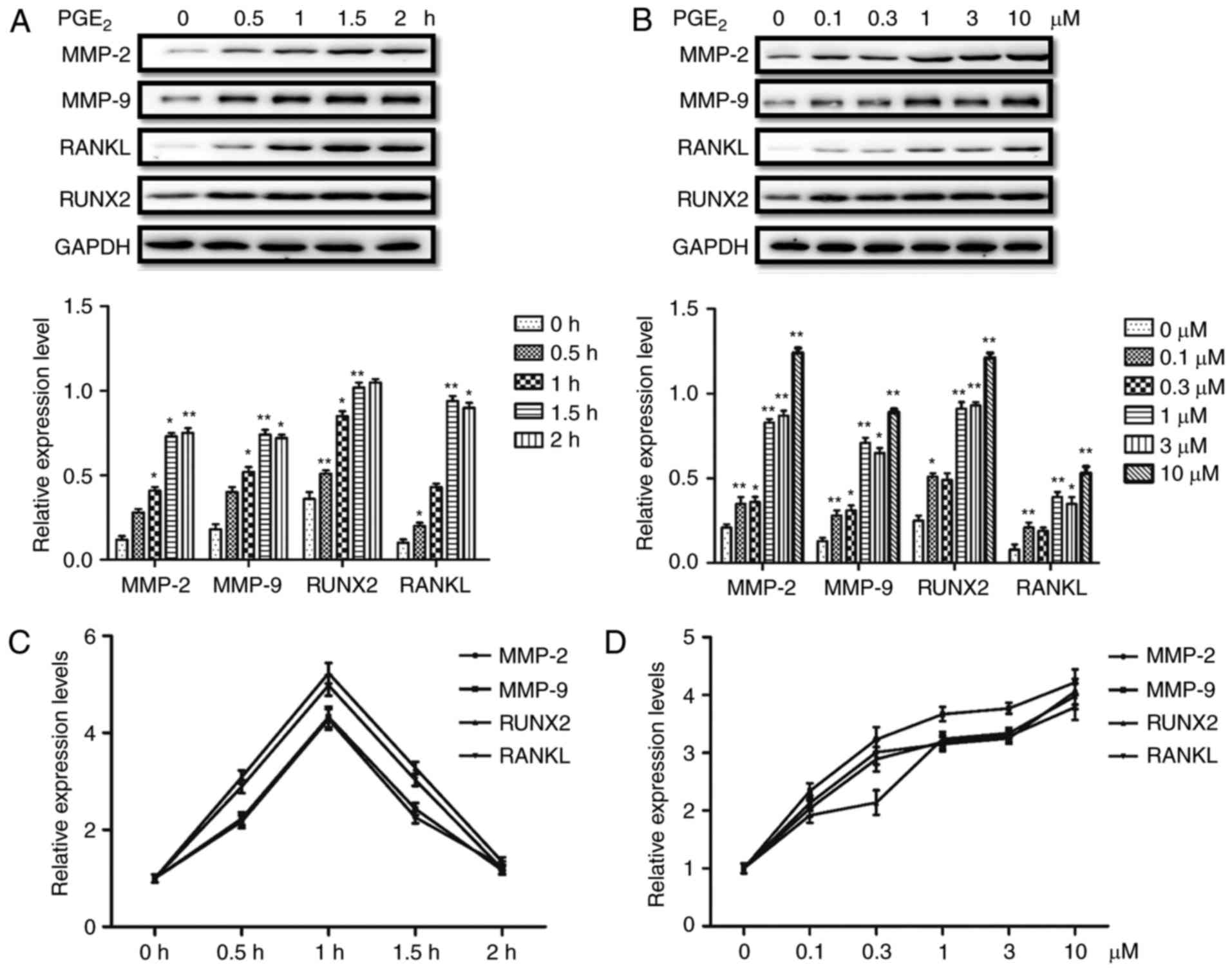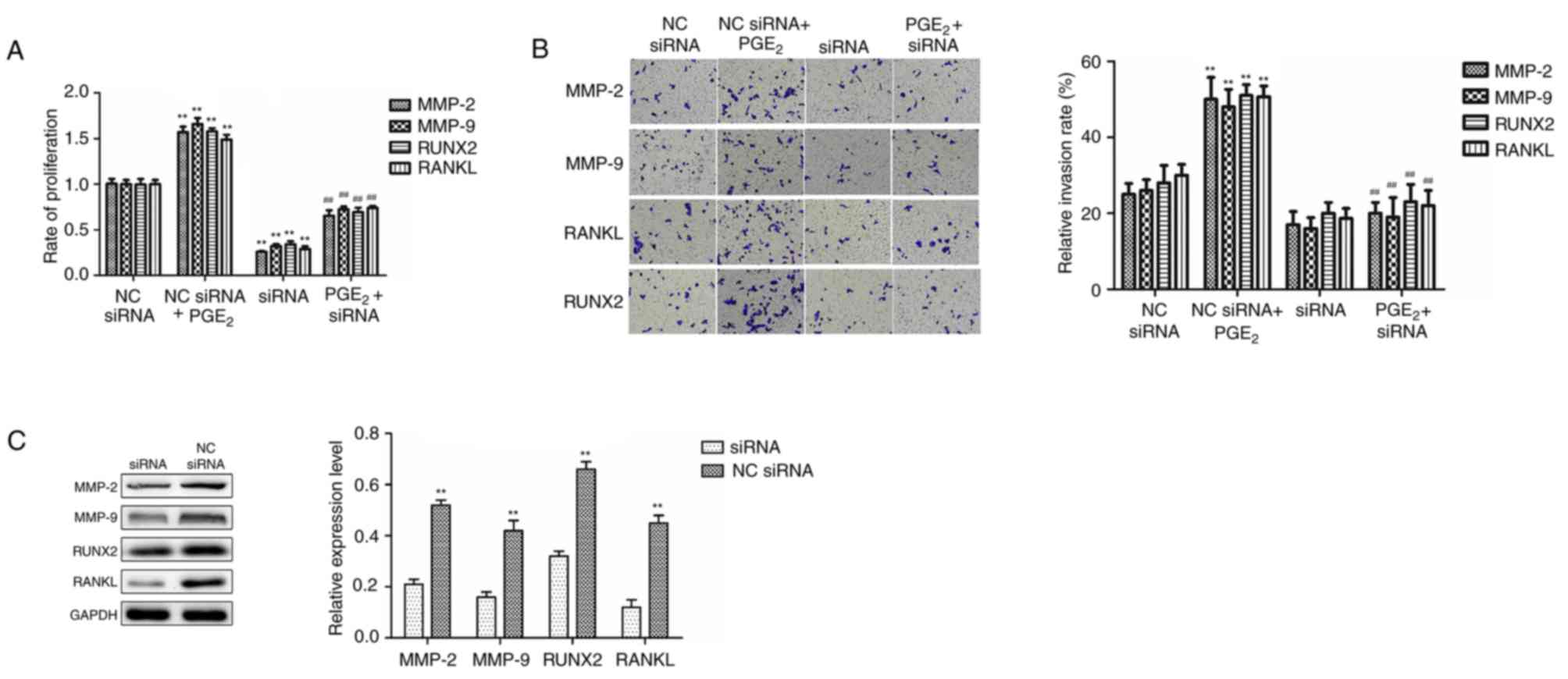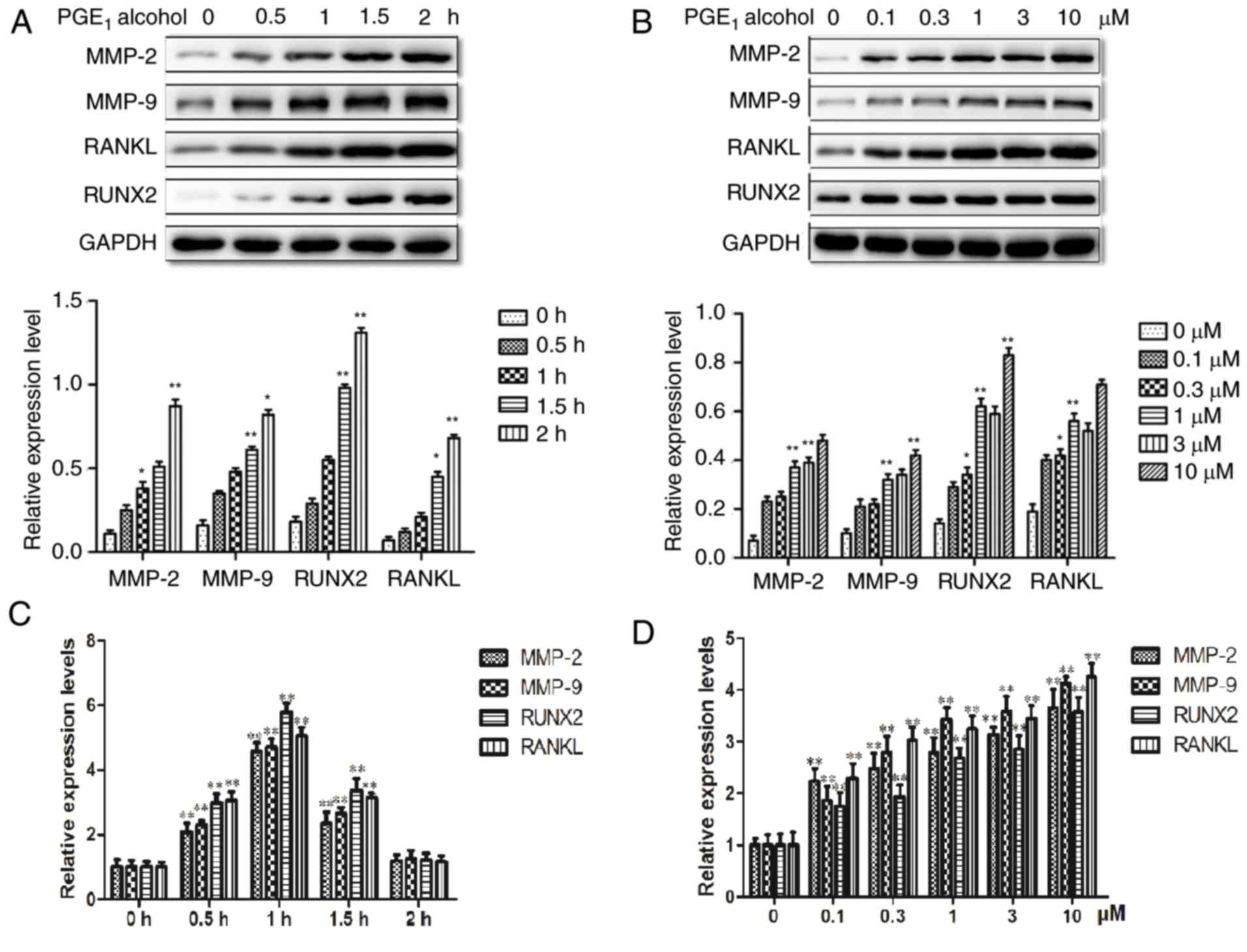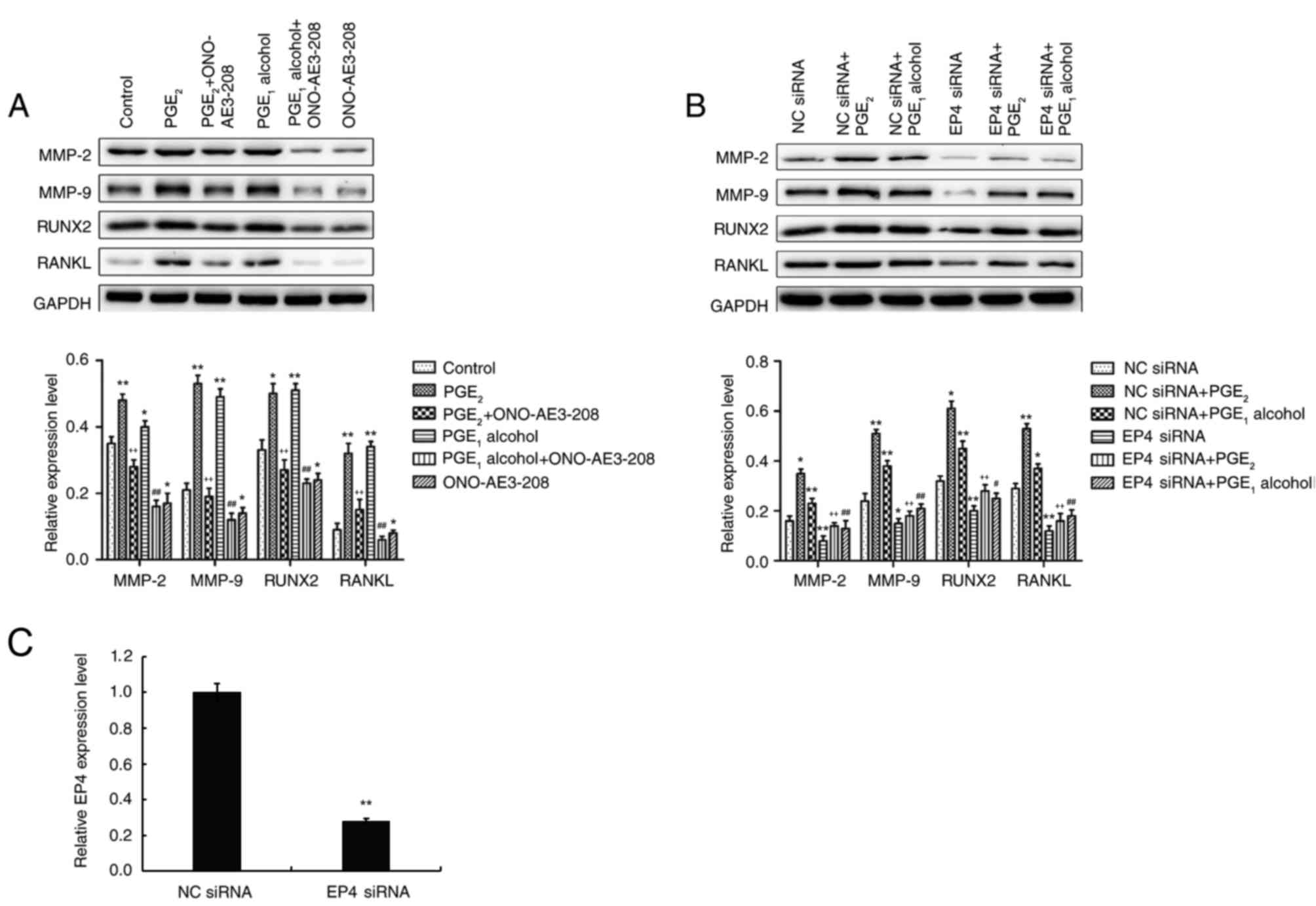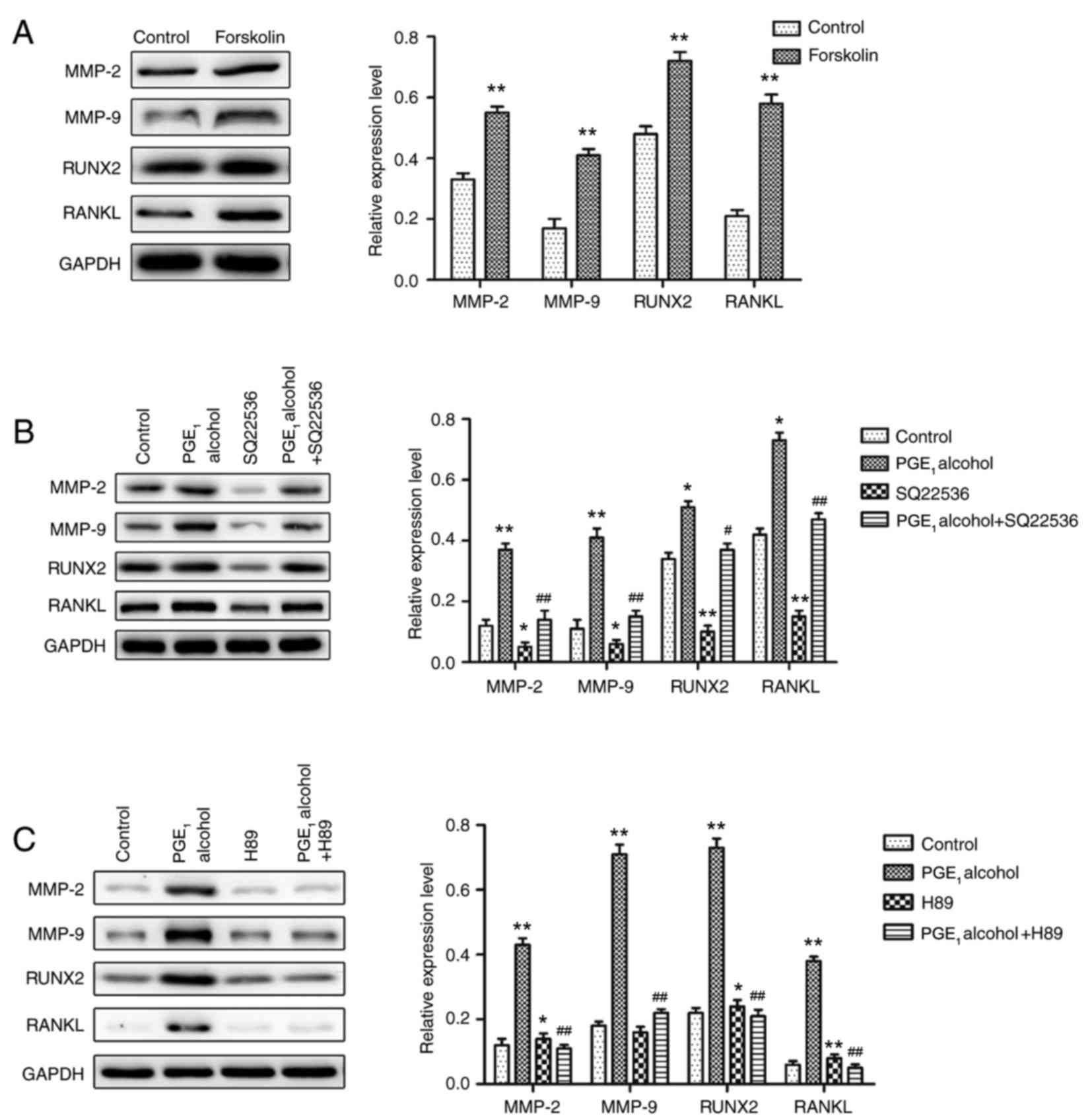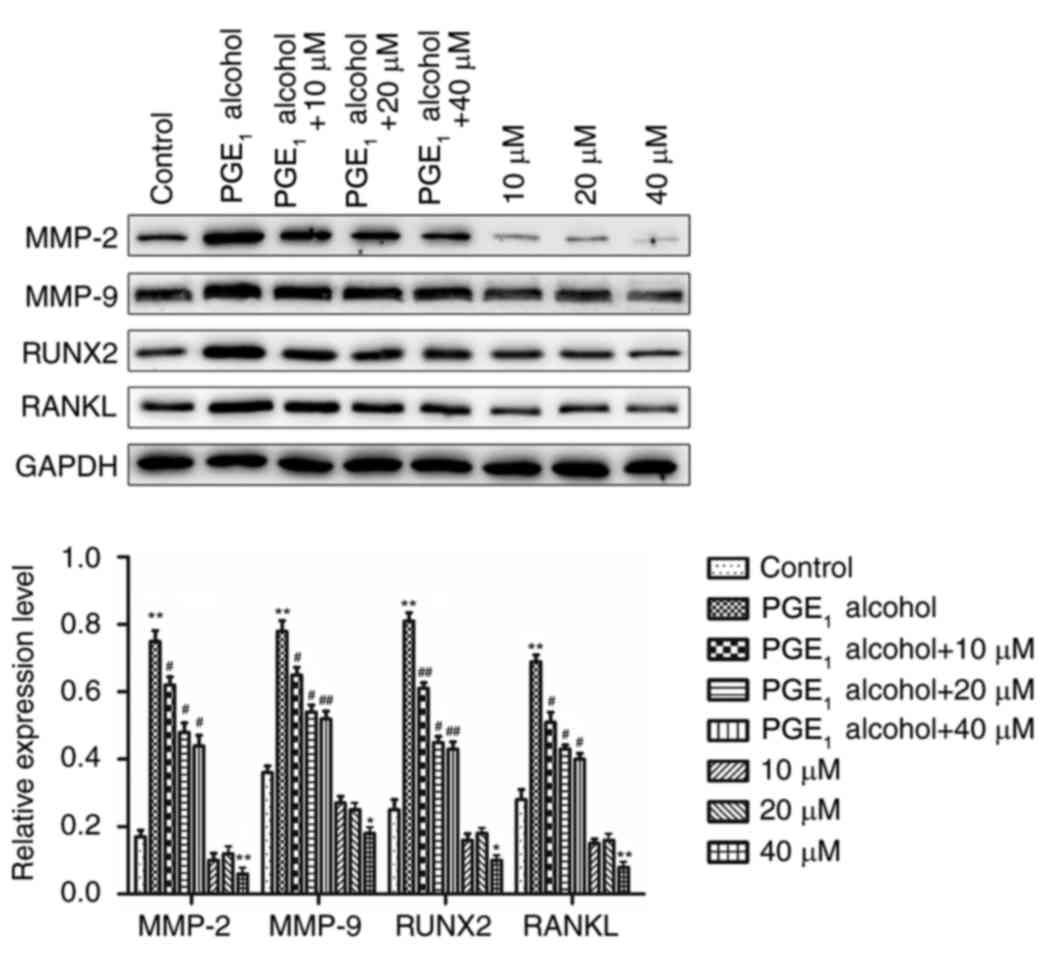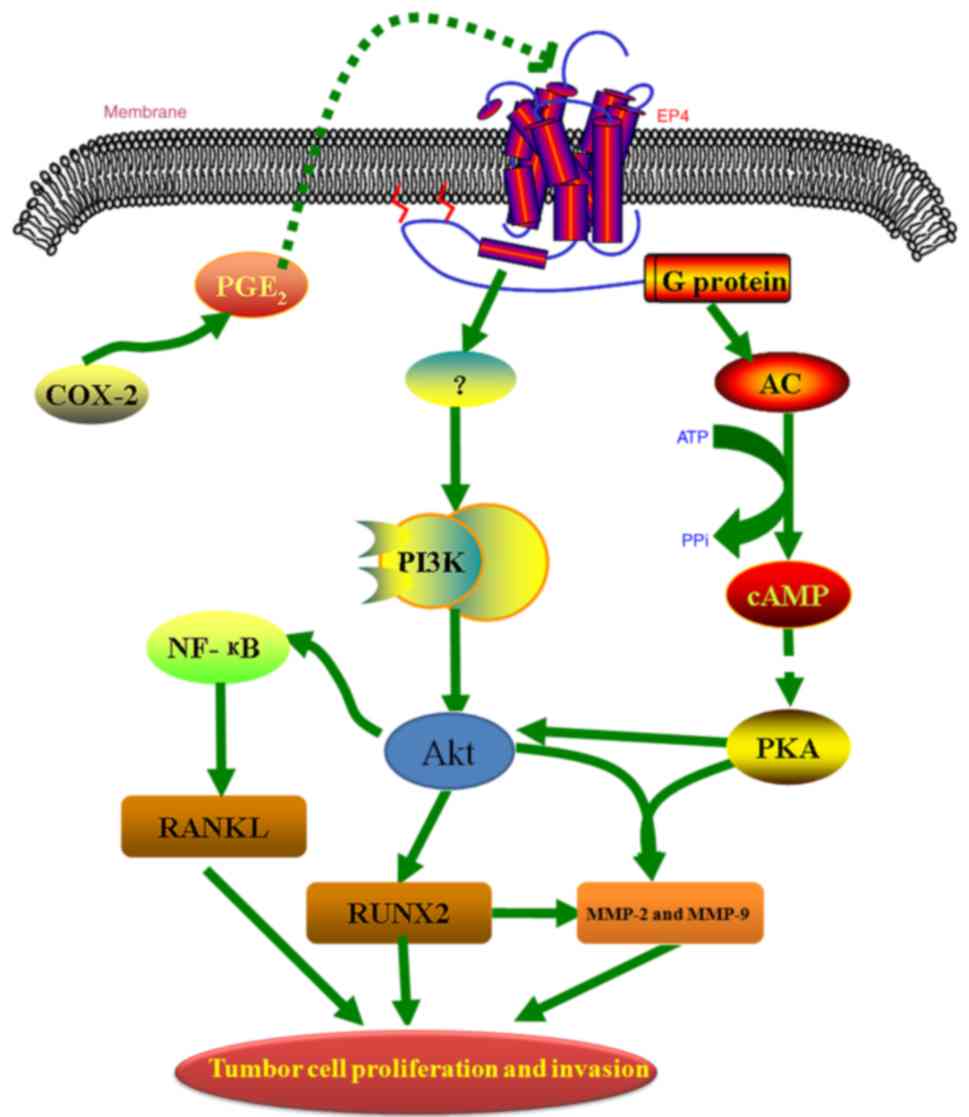|
1
|
Bashir MN: Epidemiology of prostate
cancer. Asian Pac J Cancer Prev. 16:5137–5141. 2015. View Article : Google Scholar : PubMed/NCBI
|
|
2
|
Carroll PR: Early stage prostate cancer-do
we have a problem with over-detection, overtreatment or both? J
Urol. 173:1061–1062. 2005. View Article : Google Scholar : PubMed/NCBI
|
|
3
|
Siegel R, Naishadham D and Jemal A: Cancer
statistic, 2012. CA Cancer J Clin. 62:10–29. 2012. View Article : Google Scholar : PubMed/NCBI
|
|
4
|
Siegel R, DeSantis C, Virgo K, Stein K,
Mariotto A, Smith T, Cooper D, Gansler T, Lerro C, Fedewa S, et al:
Cancer treatment and survivorship statistics, 2012. CA Cancer J
Clin. 62:220–241. 2012. View Article : Google Scholar : PubMed/NCBI
|
|
5
|
Ferlay J, Soerjomataram I, Dikshit R, Eser
S, Mathers C, Rebelo M, Parkin DM, Forman D and Bray F: Cancer
incidence and mortality worldwide: sources, methods and major
patterns in GLOBOCAN 2012. Int J Cancer. 136:E359–E386. 2015.
View Article : Google Scholar : PubMed/NCBI
|
|
6
|
Berasain C, Castillo J, Perugorria MJ,
Latasa MU, Prieto J and Avila MA: Inflammation and liver cancer:
New molecular links. Ann N Y Acad Sci. 1155:206–221. 2009.
View Article : Google Scholar : PubMed/NCBI
|
|
7
|
Nakagawa H and Maeda S: Inflammation- and
stress-related signaling pathways in hepatocarcinogenesis. World J
Gastroenterol. 18:4071–4081. 2012. View Article : Google Scholar : PubMed/NCBI
|
|
8
|
Ramakrishna G, Rastogi A, Trehanpati N,
Sen B, Khosla R and Sarin SK: From cirrhosis to hepatocellular
carcinoma: New molecular insights on inflammation and cellular
senescence. Liver cancer. 2:367–383. 2013. View Article : Google Scholar : PubMed/NCBI
|
|
9
|
Ono K, Akatsu T, Murakami T, Kitamura R,
Yamamoto M, Shinomiya N, Rokutanda M, Sasaki T, Amizuka N, Ozawa H,
et al: Involvement of cyclo-oxygenase-2 in osteoclast formation and
bone destruction in bone metastasis of mammary carcinoma cell
lines. J Bone Miner Res. 17:774–781. 2002. View Article : Google Scholar : PubMed/NCBI
|
|
10
|
Rizzo MT: Cyclooxygenase-2 in oncogenesis.
Clin Chim Acta. 412:671–687. 2011. View Article : Google Scholar : PubMed/NCBI
|
|
11
|
Hawk ET, Viner JL, Dannenberg A and DuBois
RN: COX-2 in cancer-a player that's defining the rules. J Natl
Cancer Inst. 94:545–546. 2002. View Article : Google Scholar : PubMed/NCBI
|
|
12
|
Lee KS, Lee HJ, Ahn KS and Kim SH, Nam D,
Kim DK, Choi DY, Ahn KS, Lu J and Kim SH:
Cyclooxygenase-2/prostaglandin E2 pathway mediates icariside II
induced apoptosis in human PC-3 prostate cancer cells. Cancer Lett.
280:93–100. 2009. View Article : Google Scholar : PubMed/NCBI
|
|
13
|
Takahashi T, Uehara H, Bando Y and Izumi
K: Soluble EP2 neutralizes prostaglandin E2-induced cell signaling
and inhibits osteolytic tumor growth. Mol Cancer Ther. 7:2807–2816.
2008. View Article : Google Scholar : PubMed/NCBI
|
|
14
|
Richie-Jannetta R, Nirodi CS, Crews BC,
Woodward DF, Wang JW, Duff PT and Marnett LJ: Structural
determinants for calcium mobilization by prostaglandin E2 and
prostaglandin F2alpha glyceryl esters in RAW 264.7 cells and H1819
cells. Prostaglandins Other Lipid Mediat. 92:19–24. 2010.
View Article : Google Scholar : PubMed/NCBI
|
|
15
|
Murakami M and Kudo I: Recent advances in
molecular biology and physiology of the prostaglandin
E2-biosynthetic pathway. Prog Lipid Res. 43:3–35. 2004. View Article : Google Scholar : PubMed/NCBI
|
|
16
|
Hata AN and Breyer RM: Pharmacology and
signaling of prostaglandin receptors: Multiple roles in
inflammation and immune modulation. Pharmacol Ther. 103:147–166.
2004. View Article : Google Scholar : PubMed/NCBI
|
|
17
|
Negishi M, Sugimoto Y and Ichikawa A:
Prostaglandin E receptors. J Lipid Mediat Cell Signal. 12:379–391.
1995. View Article : Google Scholar : PubMed/NCBI
|
|
18
|
George RJ, Sturmoski MA, Anant S and
Houchen CW: EP4 mediates PGE2 dependent cell survival through the
PI3 kinase/AKT pathway. Prostaglandins Other Lipid Mediat.
83:112–120. 2007. View Article : Google Scholar : PubMed/NCBI
|
|
19
|
Huang HF, Shu P, Murphy TF, Aisner S,
Fitzhugh VA and Jordan ML: Significance of divergent expression of
prostaglandin EP4 and EP3 receptors in human prostate cancer. Mol
Cancer Res. 11:427–439. 2013. View Article : Google Scholar : PubMed/NCBI
|
|
20
|
Madrigal-Martinez A, Cazana FJ and
Fernandez-Martinez yA: Role of intracellular prostaglandin E2 in
cancer-related phenotypes in PC3 cells. Int J Biochem Cell Biol.
59:52–61. 2015. View Article : Google Scholar : PubMed/NCBI
|
|
21
|
Yen JH, Kocieda VP, Jing H and Ganea D:
Prostaglandin E2 induces matrix metalloproteinase 9 expression in
dendritic cells through two independent signaling pathways leading
to activator protein 1 (AP-1) Activation. J Biol Chem.
286:38913–38923. 2011. View Article : Google Scholar : PubMed/NCBI
|
|
22
|
Miao L, Grebhardt S, Shi J, Peipe I, Zhang
J and Mayer D: Prostaglandin E2 stimulates S100A8 expression by
activating protein kinase A and CCAAT/enhancer-binding-protein-beta
in prostate cancer cells. Int J Biochem Cell Biol. 44:1919–1928.
2012. View Article : Google Scholar : PubMed/NCBI
|
|
23
|
Surhone LM, Tennoe MT and Henssonow SF:
Ep4 Receptor. Betascript Publishing; 2011
|
|
24
|
Kundu N, Ma X, Kochel T, Goloubeva O,
Staats P, Thompson K, Martin S, Reader J, Take Y, Collin P and
Fulton A: Prostaglandin E receptor EP4 is a therapeutic target in
breast cancer cells with stem-like properties. Breast Cancer Res
Treat. 143:19–31. 2014. View Article : Google Scholar : PubMed/NCBI
|
|
25
|
Ma X, Holt D, Kundu N, Reader J, Goloubeva
O, Take Y and Fulton AM: A prostaglandin E (PGE) receptor EP4
antagonist protects natural killer cells from PGE2-mediated
immunosuppression and inhibits breast cancer metastasis.
Oncoimmunology. 2:e226472013. View Article : Google Scholar : PubMed/NCBI
|
|
26
|
Xia S, Ma J, Bai X, Zhang H, Cheng S,
Zhang M, Zhang L, Du M, Wang Y, Li H, et al: Prostaglandin E2
promotes the cell growth and invasive ability of hepatocellular
carcinoma cells by upregulating c-Myc expression via EP4 receptor
and the PKA signaling pathway. Oncol Rep. 32:1521–1530. 2014.
View Article : Google Scholar : PubMed/NCBI
|
|
27
|
Xu S, Zhang Z, Ogawa O, Yoshikawa T,
Sakamoto H, Shibasaki N, Goto T, Wang L and Terada N: An EP4
antagonist ONO-AE3-208 suppresses cell invasion, migration and
metastasis of prostate cancer. Cell Biochem Biophys. 70:521–527.
2014. View Article : Google Scholar : PubMed/NCBI
|
|
28
|
Xu S, Goto T, Yoshikawa T, Zhang Z, Wang
L, Terada N and Ogawa O: Abstract 2813: EP4 antagonist suppresses
bone metastasis in prostate cancer. Cancer Res (AACR Annual Meeting
abstracts). 73:2813. 2014.
|
|
29
|
Xu S, Wang L, Ge LP, Zhou W and Zhang Z:
Effect of EP4 receptor antagonist on malignant phenotypes of
androgen-independent prostate cancer cells PC3. Jiangsu Med J.
40:R7372014.(In Chinese).
|
|
30
|
Xu S, Ge JP, Zhou WQ and Zhang ZY:
Inhibitory effect of ONO-AE3-208 on the formation of bone
metastasis of prostate cancer in mice. Zhonghua Nan Ke Xue.
20:684–689. 2014.(In Chinese). PubMed/NCBI
|
|
31
|
Harris RE: Cyclooxygenase-2 (cox-2)
blockade in the chemoprevention of cancers of the colon, breast,
prostate and lung. Inflammopharmacology. 17:55–67. 2009. View Article : Google Scholar : PubMed/NCBI
|
|
32
|
Nagase H and Woessner JF Jr: Matrix
metalloproteinases. J Biol Chem. 274:21491–21494. 1999. View Article : Google Scholar : PubMed/NCBI
|
|
33
|
Verma RP and Hansch C: Matrix
metalloproteinases (MMPs): Chemical-biological functions and
(Q)SARs. Bioorg Med Chem. 15:2223–2268. 2007. View Article : Google Scholar : PubMed/NCBI
|
|
34
|
Chen S, Chen W, Zhang X, Lin S and Chen Z:
Overexpression of KiSS-1 reduces colorectal cancer cell invasion by
downregulating MMP-9 via blocking PI3K/Akt/NF-κB signal pathway.
Int J Oncol. 48:1391–1398. 2016. View Article : Google Scholar : PubMed/NCBI
|
|
35
|
Wong BR, Rho J, Arron J, Robinson E,
Orlinick J, Chao M, Kalachikov S, Cayani E, Bartlett FS III,
Frankel WN, et al: TRANCE is a novel ligand of the tumor necrosis
factor receptor family that activates c-jun n-terminal kinase in T
cells. J Biol Chem. 272:251901997. View Article : Google Scholar : PubMed/NCBI
|
|
36
|
Anderson DM, Maraskovsky E, Billingsley
WL, Dougall WC, Tometsko ME, Roux ER, Teepe MC, DuBose RF, Cosman D
and Galibert L: A homologue of the TNF receptor and its ligand
enhance T-cell growth and dendritic-cell function. Nature.
390:175–179. 1997. View
Article : Google Scholar : PubMed/NCBI
|
|
37
|
Mayahara K, Yamaguchi A, Takenouchi H,
Kariya T, Taguchi H and Shimizu N: Osteoblasts stimulate
osteoclastogenesis via RANKL expression more strongly than
periodontal ligament cells do in response to PGE(2). Arch Oral
Biol. 57:1377–1384. 2012. View Article : Google Scholar : PubMed/NCBI
|
|
38
|
Schmiedel BJ, Scheible CA, Nuebling T,
Kopp HG, Wirths S, Azuma M, Schneider P, Jung G, Grosse-Hovest L
and Salih HR: RANKL expression, function and therapeutic targeting
in multiple myeloma and chronic lymphocytic leukemia. Cancer Res.
73:683–694. 2013. View Article : Google Scholar : PubMed/NCBI
|
|
39
|
Akech J, Wixted JJ, Bedard K, van der Deen
M, Hussain S, Guise TA, van Wijnen AJ, Stein JL, Languino LR,
Altieri DC, et al: Runx2 association with progression of prostate
cancer in patients: Mechanisms mediating bone osteolysis and
osteoblastic metastatic lesions. Oncogene. 29:811–821. 2010.
View Article : Google Scholar : PubMed/NCBI
|
|
40
|
Wang X and Klein RD: Prostaglandin E2
induces vascular endothelial growth factor secretion in prostate
cancer cells through EP2 receptor-mediated cAMP pathway. Mol
Carcinog. 46:912–923. 2007. View Article : Google Scholar : PubMed/NCBI
|
|
41
|
Sha W, Olesch C, Hanaka H, Radmark O,
Weigert A and Brune B: Necrosis in DU145 prostate cancer spheroids
induces COX-2/mPGES-1-derived PGE2 to promote tumor growth and to
inhibit T cell activation. Int J Cancer. 133:1578–1588. 2013.
View Article : Google Scholar : PubMed/NCBI
|
|
42
|
Kim JI, Lakshmikanthan V, Frilot N and
Daaka Y: Prostaglandin E2 promotes lung cancer cell migration via
EP4-betaArrestin1-c-Src signalsome. Mol Cancer Res. 8:569–577.
2010. View Article : Google Scholar : PubMed/NCBI
|
|
43
|
Livak KJ and Schmittgen TD: Analysis of
relative gene expression data using real-time quantitative PCR and
the 2(-Delta Delta C(T)) method. Methods. 25:402–408. 2001.
View Article : Google Scholar : PubMed/NCBI
|
|
44
|
Cooper DM: Regulation and organization of
adenylyl cyclases and cAMP. Biochem J. 375:517–529. 2003.
View Article : Google Scholar : PubMed/NCBI
|
|
45
|
Vo BT, Morton D Jr, Komaragiri S, Millena
AC, Leath C and Khan SA: TGF-β effects on prostate cancer cell
migration and invasion are mediated by PGE2 through activation of
PI3K/AKT/mTOR pathway. Endocrinology. 154:1768–1779. 2013.
View Article : Google Scholar : PubMed/NCBI
|
|
46
|
Kisslov L, Hadad N, Rosengraten M and Levy
R: HT-29 human colon cancer cell proliferation is regulated by
cytosolic phospholipase A(2)α dependent PGE(2)via both PKA and PKB
pathways. Biochim Biophys Acta. 1821:1224–1234. 2012. View Article : Google Scholar : PubMed/NCBI
|
|
47
|
Han C, Michalopoulos GK and Wu T:
Prostaglandin E2 receptor EP1 transactivates EGFR/MET receptor
tyrosine kinases and enhances invasiveness in human hepatocellular
carcinoma cells. J Cell Physiol. 207:261–270. 2006. View Article : Google Scholar : PubMed/NCBI
|
|
48
|
Bai X, Wang J, Zhang L, Ma J, Zhang H, Xia
S, Zhang M, Ma X, Guo Y, Rong R, et al: Prostaglandin E2 receptor
EP1-mediated phosphorylation of focal adhesion kinase enhances cell
adhesion and migration in hepatocellular carcinoma cells. Int J
Oncol. 42:1833–1841. 2013. View Article : Google Scholar : PubMed/NCBI
|
|
49
|
Peng Y, Shi J, Du X, Wang L, Klocker H, Mo
L, Mo Z and Zhang J: Prostaglandin E2 induces stromal cell-derived
factor-1 expression in prostate stromal cells by activating protein
kinase A and transcription factor Sp1. Int J Biochem Cell Biol.
45:521–530. 2013. View Article : Google Scholar : PubMed/NCBI
|
|
50
|
Wu J, Zhang Y, Frilot N, Kim JI, Kim WJ
and Daaka Y: Prostaglandin E2 regulates renal cell carcinoma
invasion through the EP4 receptor-Rap GTPase signal transduction
pathway. J Biol Chem. 286:33954–33962. 2011. View Article : Google Scholar : PubMed/NCBI
|
|
51
|
Jain S, Chakraborty G, Raja R, Kale S and
Kundu GC: Prostaglandin E2 regulates tumor angiogenesis in prostate
cancer. Cancer Res. 68:7750–7759. 2008. View Article : Google Scholar : PubMed/NCBI
|
|
52
|
Reader J, Holt D and Fulton A:
Prostaglandin E2 EP receptors as therapeutic targets in breast
cancer. Cancer Metastasis Rev. 30:449–463. 2011. View Article : Google Scholar : PubMed/NCBI
|
|
53
|
Bai XM, Zhang W, Liu NB, Jiang H, Lou KX,
Peng T, Ma J, Zhang L, Zhang H and Leng J: Focal adhesion kinase:
Important to prostaglandin E2-mediated adhesion, migration and
invasion in hepatocellular carcinoma cells. Oncol Rep. 21:129–136.
2009.PubMed/NCBI
|
|
54
|
Cherukuri DP, Goulet AC, Young RN,
Meuillet E, Regan WJ and Nelson MA: Prostagland in E2
(PGE2)-induced etracellular-regulated kinase
(ERK1/2)-phosphorylation is mediated by EP4 receptor in human colon
cancer cells. Cancer Res. 47:3872006.
|
|
55
|
Friis UG, Stubbe J, Uhrenhoil TR,
Svenningsen P, Nüsing RM, Skøtt O and Jensen BL: Prostaglandin E2
EP2 and EP4 receptor activation mediates cAMP-dependent
hyperpolarization and exocytosis of renin in juxtaglomerular cells.
Am J Physiol Renal Physiol. 289:F989–F997. 2005. View Article : Google Scholar : PubMed/NCBI
|
|
56
|
Tauro M, Laghezza A, Tortorella P and
Lynch CC: Abstract 4858: A novel strategy for the selective and
tissue specific inhibition of MMPs in active breast cancer to bone
metastases. Cancer Res (AACR Annual Meeting abstracts). 74:pp.
48582014;
|
|
57
|
Jones DH, Nakashima T, Sanchez OH,
Kozieradzki I, Komarova SV, Sarosi I, Morony S, Rubin E, Sarao R,
Hojilla CV, et al: Regulation of cancer cell migration and bone
metastasis by RANKL. Nature. 440:692–696. 2006. View Article : Google Scholar : PubMed/NCBI
|
|
58
|
Baniwal SK, Khalid O, Gabet Y, Shah RR,
Purcell DJ, Mav D, Kohn-Gabet AE, Shi Y, Coetzee GA and Frenkel B:
Runx2 transcriptome of prostate cancer cells: Insights into
invasiveness and bone metastasis. Mol Cancer. 9:2582010. View Article : Google Scholar : PubMed/NCBI
|
|
59
|
Hussain A and Jayasekera O:
Characteristics of stage III and IV M0 prostate cancer patients in
Seer-medicare who develop bone Metastasis following diagnosis.
|
|
60
|
Sassone-Corsi P: The cyclic AMP pathway.
Cold Spring Harb Perspect Biol. 4:a0111482012. View Article : Google Scholar : PubMed/NCBI
|
|
61
|
Fimia GM and Sassone-Corsi P: Cyclic AMP
signalling. J Cell Sci. 114:1971–1972. 2001.PubMed/NCBI
|
|
62
|
Manning BD and Cantley LC: AKT/PKB
signaling: Navigating downstream. Cell. 129:1261–1274. 2007.
View Article : Google Scholar : PubMed/NCBI
|



